

The Network Pays
CUPPA’s alumni network is well-known. Within Chicago and extending well beyond the city, the college’s alumni find themselves making important contributions to the world around them.

For CUPPA students embarking on graduation, the anticipation of finding a job that fits their skills and makes the world a better place can be daunting. Still, CUPPA students and alumni have one resource that’s proven valuable countless times: the CUPPA Jobs Blog, viewable at cuppacareers.blogspot.com.
First started in 2009, the Jobs Blog has posted hundreds of positions a year since then. It’s a vital resource that connects current students, CUPPA alumni, other curious job seekers to employers who recognize the value of the CUPPA community for finding effective candidates.
One of those companies who has relied upon the CUPPA Jobs Blog to grow its staff is MUSE
Community + Design, a community engagementcentered planning firm that opened in Chicago several years ago. Today, it counts four of its twelve current staff members as CUPPA alumni. Its founder, Courtney Kashima, MUPP ’04, AICP, has often turned to the CUPPA Jobs Blog, knowing that it will help to attract ideal candidates.
“CUPPA graduates have a solid grounding in technical skills as well as soft skills,” Kashima said. “In my experience, they have an advocate’s heart and that the ultimate client is always the community, and [for our organization], the job [blog] is a direct connection to passionate professionals who love what they do.”
For those interested in sharing open positions or internships, email cuppa@uic.edu.
cuppacareers.blogspot.com

College of Urban Planning and Public Affairs
Dean: Stacey Swearingen White, staceysw@uic.edu
Associate Dean for Administration: Kathleen M Engstrom, kengstro@uic.edu
Associate Dean for Academic Affairs: Curt Winkle, cwinkle@uic.edu
Associate Dean for Diversity, Equity, and Inclusion: Kathleen Yang-Clayton, kyclaytn@uic.edu
Associate Dean for Research and Faculty Affairs: Kelly LeRoux, kleroux@uic.edu
Editor: Jodi White Jones, Assistant Dean for Communications
Writer: Annie Howard
Design: Martin Cimek
Printing: UIC Creative and Digital Services
Photography: Josh Clark
Roberta Dupuis-Devlin
Robert Laemle
Sheila Vemmer
UIC Creative and Digital Services
Department of Public Policy, Management, and Analytics
Department Head: Jered Carr, jbcarr@uic.edu
Department of Urban Planning and Policy Department Head: Nik Theodore, theodore@uic.edu
CUPPA Research Centers and Institutes
Government Finance Research Center, gfrc.uic.edu
Director: Deborah Carroll, deborahc@uic.edu
Great Cities Institute, greatcities.uic.edu
Director: Teresa Cordova, tcordova@uic.edu
Institute for Policy and Civic Engagement, ipce.uic.edu
Director: Joe Hoereth, jhoereth@uic.edu

Institute for Research on Race and Public Policy, irrpp.uic.edu
Director: Amanda Lewis, aelewis@uic.edu
Nathalie P Voorhees Center for Neighborhood and Community Improvement, voorheescenter.uic.edu
Director: Yittayih Zelalem, yittazel@uic.edu
Urban Transportation Center, utc.uic.edu
Director: P.S. Sriraj, sriraj@uic.edu
Urban Data Visualization Laboratory, udv.lab.uic.edu
Photo: Lisha Riabinina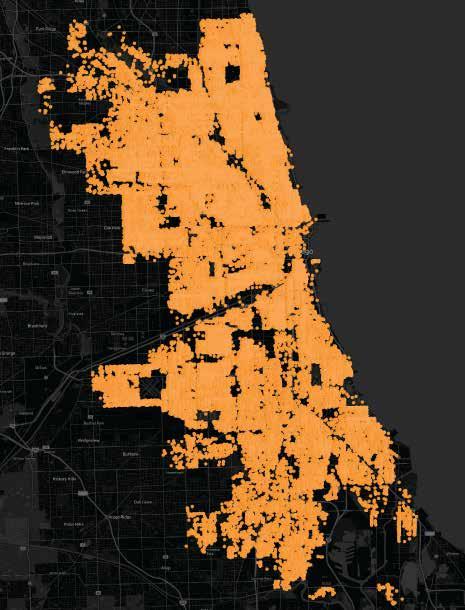 Chicago 2012 - 2018: Where every erroneous ticket was issued.
Chicago 2012 - 2018: Where every erroneous ticket was issued.
S. Western Ave.
W. 34th St. SITE
S. Damen Ave.
Master of City Design Collaborates with
mckinley park
W. 35th St.
W. 36th St.
W. Pershing Rd. S. Wood St.
S. Ashland Ave.
In the summer of 2022, CUPPA’s Master of City Design (MCD) and Master of Urban Planning and Policy (MUPP) students embarked on a month-long research, community engagement, and planning/design process with the McKinley Park Development Council, residents of McKinley Park in Chicago, Design Workshop, CUPPA’s Institute for Policy and Civic Engagement, and UPP faculty. The goal of the project was to create a starting point for developing a community-centered vision for the future of McKinley Park. The team developed engagement activities to understand residents’ experiences, wants, and needs around housing, beautification, mobility, streets, and culture. Find out more about the MCD and MUPP programs and the McKinley Park project at https://cuppa.uic.edu/academics/upp
McKinley Park Charrette 2022 - UIC Master of City Design Summer Studio
https://bit.ly/McKinleyPark22

1836 >25 %
McKinley Park settled .
>200
Community residents and users participated in the planning process.
More than a quarter of residents have lived in the neighborhood for more than 20 years.
Vacant storefronts re-activated with small businesses.
Parking lanes to accommodate small businesses, shoppers, and visitors
Other Outcome Highlights:
Space for outdoor dining and street activities to increase vibrancy.
Sidewalks expanded for pedestrian comfort. Increase housing density and maintain affordability. Utilize land for expanded and educational school services.
Transform underutilized parking lot into green space.
Planters and street lights for beautification and safety.

Feature Story Stacey Swearingen White Becomes the 8th Dean of CUPPA
Near the end of her time as an undergraduate, Stacey Swearingen White was visiting her parents, who at the time lived in the Twin Cities suburb of Arden Hills, home of Land O’ Lakes Butter. It was during winter break, and a miserable cold snap made venturing outside a deeply unpleasant proposition. The cold would soon make leaving the house literally impossible, as the twenty-below zero temperatures broke the family’s automatic garage door opener, sealing everyone inside. It was a strange moment for White, who was already studying environmental policy issues. The sense of suburban isolation, and the consequences of losing all access to the outside world, including grocery stores and restaurants, led her to understand the consequences of car-centric, suburban-focused design.
“I had this ‘aha’ moment, realizing that something is terribly wrong,” Swearingen White says. “We could starve to death because there was nothing, not even a bus stop, within walking distance, certainly not in that weather. I started to think about the built environment and how people live their daily lives, and realized something’s gone terribly awry here.”
That moment of insight is one of many that Swearingen White credits for sparking her interest in environmental design and urban planning. Her research has brought her into dialogue with numerous disciplines, as she’s dug into questions of university campus sustainability, community engagement processes in the planning process, and how innovative ideas are diffused into the best practices of government actors. This broad-minded approach has driven her work for the last several decades, and it’s exactly what drew her to the College of Urban Planning and Public Affairs
at UIC. Those mixed interests also caught the attention of those who decided to hire White as the college’s incoming dean, taking over following the retirement of Michael Pagano in 2021 and the interim term of Public Administration professor David Merriman.
Swearingen White comes to CUPPA after two and a half decades at the University of Kansas, where she most recently served as the Director of the School of Public Affairs and Administration. The idyllic college town of Lawrence, Kansas, where Swearingen White and her husband Scott raised their two sons, Thomas and Isaac, was a far cry from the Twin Cities suburb that helped her see the values of urban density. Now, she’s excited for the hubbub of UIC’s dense, downtown-adjacent campus, where she’ll be able to take the Blue Line train to work each morning from Forest Park. Especially given her interests in sustainability and adaptive reuse, she says she’s excited to work in CUPPA Hall, which has its own unique history of urban transformation, and to get to know the rest of UIC as well.
“I love the fact that CUPPA Hall is an old brassiere factory, and that it’s been renovated,” Swearingen White says. “I am a big believer in a sense of place, and I know that people have a positive sense of place [at CUPPA].”
Interdisciplinary leadership
Like many others, Swearingen White didn’t even realize that urban planning was a career option when she first learned of the field. She said she first heard the words “urban” and “planning” put together as a senior at Emory University in an environmental studies course, but didn’t think to pursue them

further until several years later, while she was pursuing a PhD in Land Resources at the University of Wisconsin-Madison. But her interests in community engagement, and the ways in which best practices in making spaces happy, healthy and livable, pushed her to engage further with the discipline, which would inform her research for the next several decades.
“As an environmental planner, I was always intrigued with what I observed,” Swearingen White says. “We have all the techniques, and we know what to do to have a healthy, naturally built environment, but we don’t do it.”
Much of that interest has distilled into her emphasis on campus sustainability. While at the University of Kansas, Swearingen White helped to co-found the school’s Center for Sustainability, which included the creation of the university’s first-ever sustainability plan. Through teaching classes like Sustainability and Society, as well as working with undergraduate students in the creation of the Center for Sustainability, Swearingen White has encouraged the next generation of students to take in interest in making their campus a healthier, more resourceful place, lessons that can then be applied to the rest of the environment around them.
“I see a campus as a microcosm for a city, as many of the same systems are in place in both areas,” Swearingen White says. “It’s a great kind of laboratory, a living lab for students to explore different solutions that could then be scaled up if they’re shown to work on campus.”
Unfortunately, the United States has often lagged when it comes to making just, resilient, and sustainable cities, as CUPPA sets out in its mission statement. Swearingen White says she’s been lucky to take KU students on summer trips to Frieberg, Germany five times over the course of her career, a city she describes as a “sustainability exemplar.” On her first trip, she took the rest of her family for a month of travel across Germany, France, and Switzerland, never once having to use a car. The experience gave her kids a level of autonomy that she remembers fondly, a model for creating the kinds of cities that suit everyday life at a sustainable, relaxed pace.
“When we were there, my kids figured out how to take the streetcar,” Swearingen White says. “They were six and eight, and when my mom came to visit, they took her on the streetcar to go somewhere together. I thought, ‘this is pretty cool.’”
Confronting big challenges
One of Swearingen White’s greatest career achievements was the role she played in assisting the transfer of KU’s urban planning program from its original home in the School of Architecture and Design into the School of Public Affairs & Administration. While the urban planning program resided inside the architecture school for the first two decades of Swearingen White’s time at the university, a mismatch between the two programs became clear by the time she was in charge of the program. At the same time, the university’s public administration program, widely regarded as one of the nation’s best, was a natural fit for the urban planning faculty, which always had a policy-driven orientation. While the
two-year transfer from one school to another was significantly more challenging than she originally expected, Swearingen White nonetheless says the experience solidified her interest in interdisciplinarity, as the transfer brought these different programs into better conversations.
“I really appreciate interdisciplinarity, and I think there’s a lot of value in it,” Swearingen White says. “As long as everyone can kind of get on the same page – when we say x, we mean this and everyone else goes, ‘Oh, that’s how we think about it,’ or not –there can be some really powerful things that come out of that.” One area that Swearingen White is excited to bring her expertise to build greater ties between CUPPA and UIC is within her interest in campus sustainability. She’s already been in touch with UIC’s Associate Vice Chancellor inviting her to plug into the university’s existing sustainability efforts, something she’s excited to do to learn more about a campus that she’s only seen a small portion of thus far.
“The campus is a fundamental part of the work that we all do, even if we don’t think about it as such,” Swearingen White says. “At the same time, there’s still so much of it I haven’t seen. When we came to close on our new house, we went down and walked around a little bit, and I was like, ‘Oh my gosh, I don’t even know this campus,’ because my interview took place in two buildings.”
Swearingen White credits Pagano’s leadership and the dedication of CUPPA’s staff, students, and faculty for putting her in an enviable position heading into the new job. Although she knows the college and UIC will continue to face new challenges and opportunities as she steps into the position, she says she’s excited for the work that’s already being done that makes jumping into a new position significantly less stressful.
“Through the interview process, I was most impressed and excited by the incredible work that is already happening in CUPPA, even as I recognize that higher education is in flux and we can’t assume that what has worked in the past will continue to work in the future,” Swearingen White says. “I look forward to identifying, with the input and assistance of my colleagues, the ways to best amplify the incredible talent that’s already here.”
From the Dean
As many have heard me say, it was CUPPA’s mission – promoting just, resilient, and livable communities – that shone like a beacon to me when considering the opportunity to become the college’s next dean. Despite being on the job just a few short months, I can say unequivocally that this is a place that works towards its mission every day. I hope you will take some time to read through this magazine to learn a little more about the amazing, mission-driven work happening here.
When I think about just communities, I am reminded of a quote from the conservationist and ecologist Aldo Leopold, who said: “We shall never achieve harmony with land, any more than we shall achieve absolute justice or liberty for people. In these higher aspirations the important thing is not to achieve, but to strive.” Some may see this as a negative outlook, but I see it as a hopeful reminder that our work is critically important and will always be so. CUPPA faculty strive towards more just communities through research such as that of Professors Nebiyou Tilahun and Stacey Sutton and the Institute for Research on Race and Public Policy (IRRPP). In separate but related studies, they find that Chicago traffic enforcement techniques disproportionately impact members of lower-income and minority communities, even as they improve safety. Unraveling these complex findings and adapting policy accordingly underscores the need for continual striving that Leopold signaled.
When I think about resilient communities, I again consider the ecological. The term resilience in fact comes from ecology and refers to the ability of a natural system to bounce back following a disturbance. As we have witnessed the devastation associated with recent hurricanes in places like Puerto Rico and Florida, it is clear that impacted communities must contend with both ecological and social aspects of resilience.
Professor Nik Theodore’s work on survival economics in Black communities shows that people demonstrate resilience in myriad ways, whether the disturbance be a pandemic or a natural disaster. The Great Cities Institute’s Hardship Index project helps us see where policy might best be deployed to enhance individual and community resilience.
When I think about livable communities, I recognize that this concept also has multiple meanings and scales. For some, a livable community is one that feels vibrant, walkable, and safe. For others, such as the communities the Government Finance Research Center (GFRC) is assisting through its water rate study, livable may take on a more basic connotation of a place where one’s drinking water is both clean and affordable. In an even broader sense, livability correlates with the protection of democratic values, something assured only when citizens exercise their right to vote in our free and fair elections. Committed to understanding influences on voter turnout, Professor Kelly LeRoux’s has recently examined how non-profit organizations communicate with their constituencies and how different messages and messaging may impact voting behaviors.
As CUPPA’s new dean, I am committed to something I am referring to as Mission Outside: Mission Inside. With all the incredible work our faculty, staff, students, and alumni are doing to build just, resilient, and livable communities in Chicagoland and beyond, I want to ensure that this college is itself a place that embeds those characteristics internally. We strive to be just and fair, just as Aldo Leopold exhorted. We have demonstrated immense resilience through the last two and a half years of pandemic uncertainty and renewed attention to racial disparities. We will continue to bounce back. And we must be a place that is livable in every sense of that word, from being vibrant, dynamic, and inviting, to a place where all feel welcomed and supported.
Do you see a place where you can help us live out our mission? We welcome that! Meanwhile, please enjoy our magazine. I could not be more excited or humbled to share it with you.
Stacey Swearingen White, Dean

When Urban Planning and Policy professor Nik Theodore began studying survival economics within Black communities in the Chicagoland area in partnership with Equity and Transformation (EAT) in 2019, he could not have anticipated the ways in which the Covid-19 pandemic would change the significance of his research.
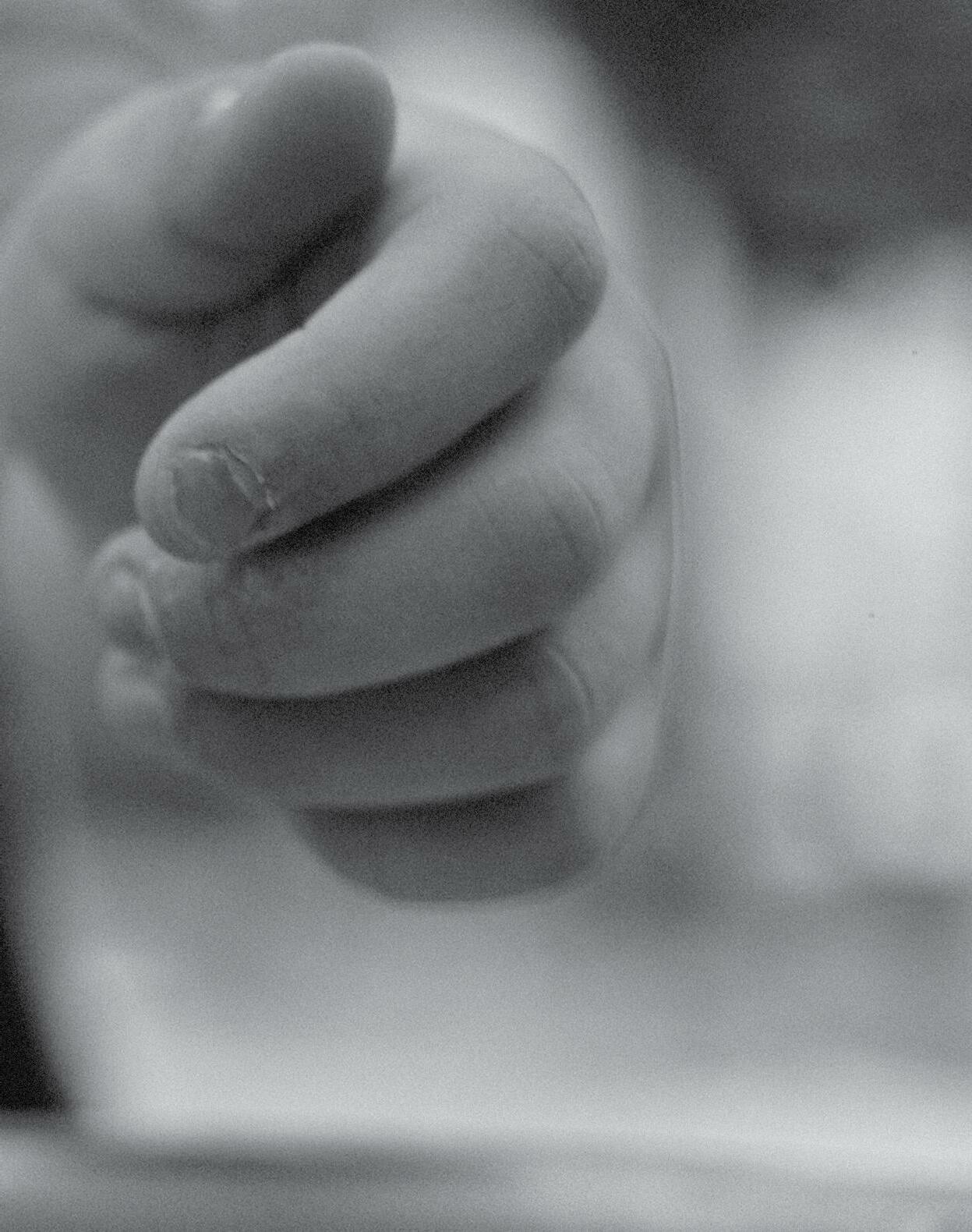
While Theodore has long studied urban informality, looking at aspects of the daily lives of everyday urban residents that often escape the view of formal urban planning and policymaking, this facet of low-income people’s lives was critical in the opening months of the pandemic. When countless avenues for wage-earning work among low-income people vanished overnight, a turn to survival economic practices, such as selling loose cigarettes to neighbors and offering informal childcare out of one’s apartment, was for some the only way they avoided a complete loss of income brought on by the pandemic.
“What we saw during the pandemic was more and more pressure on this hidden segment of the economy, because more and more Chicagoans had to turn to these informal activities to make ends meet,” Theodore said. “A situation like that, a pandemic, put incredible pressure on lower-income Chicagoans, and resorting to informality is one way that many people have dealt with that difficult period.”
As Theodore’s research found, a staggering number of Black Chicagoans are forced to engage in informal “hustles” to pay their bills, activities that do not register as formal employment but nevertheless keep people’s heads above water. Among those surveyed during the research project, nearly half of respondents said they had no access to formal employment, with just 29 percent saying that they’d received a formal paycheck for their employment in the previous year. These kinds of workers then had less access to the significant federal and state spending on unemployment resources in the opening months of the pandemic, lacking clear evidence in many cases that their means of employment had been curtailed by the pandemic.
Theodore’s work is one part of the important research happening in the college. In fact, numerous projects are tackling some of the day’s most pressing issues, keeping CUPPA at the forefront of vital issues remaking our society today.
Just as the pandemic has continued unabated since starting in March 2020, the issues that it created within our cities and communities have only grown more complex and challenging. Yet the work done by CUPPA faculty, staff, and students in the two years since the pandemic began has demonstrated the college’s deep commitment to transforming the underlying conditions that have made the past few years so challenging, with various research projects taking a closer look at conditions that need addressing. While these projects are only one small component of larger pushes for societal transformation that have emerged in recent years, their impact is nonetheless critical to maintaining the college’s deep ties to social change, as outside organizations look to the college for valuable research insights into some of the most pressing issues they face today.
From ongoing debates around speed cameras, parking tickets, and the challenges of automated fine enforcement in our cities, to disparities in clean and affordable water across the state of Illinois, CUPPA research is pushing forward important, challenging conversations around building a more equitable society. While each project takes a different issue as its focus, their cumulative impact continues to place the college at the forefront of these important issues, reaffirming the college’s commitment to the kinds of applied research that changes the world around it.
Accessing safe, affordable drinking water
Across Illinois, access to clean, affordable drinking water is vastly unequal. While the city of Flint, Michigan has become the primary reference point for poor drinking water conditions in the United States, the downstate town of Centreville, Illinois, is both one of the nation’s poorest communities and also one that’s had significant issues with both flooding and poor water conditions
for years, forcing many residents to treat their tap water before consuming it.
Still, even with certain communities lacking access to reliable, clean water, that doesn’t mean that they’re paying less for experiencing worse-quality conditions. Indeed, many largelyBlack suburbs and towns across the state have some of the highest water rate payments, especially as a percentage of their income relative to well-to-do white communities. Given these overlapping disparities, the need for significant changes statewide is acute, leading the Illinois General Assembly to allocate funding from the American Rescue Plan Act towards research into this issue.
When the need to investigate this problem was first raised, CUPPA’s Government Finance Research Center (GFRC) was identified as the appropriate organization to carry out this work. Once funding was allocated in 2021, the GFRC began a threeyear research project into the issue. While the work is only in its early stages, it has revealed the scope of this crisis for many communities, setting the table for the center to propose significant changes for statewide practices in the coming years. Currently, the center is determining specific locations for case studies that can best illuminate these issues, with an emphasis on Housing and Urban Development-designated ‘hard-hit’ Census tracts for their initial research.
GFRC
Carroll said.
The GFRC’s research is one of several CUPPA projects in recent years that’s tackled issues of water accessibility in Illinois. In 2020, Master of Urban Planning and Policy (MUPP) students participating in a comprehensive planning project for the Village of Dolton, a postindustrial suburb just south of Chicago, were awarded the best student plan by the Illinois chapter of the American Planning Association. The plan, carried out as part of the program’s flagship Plan-Making Studio course, offered the village concrete suggestions for dealing with its outstanding water debt owed to the city of Chicago, a burden that hurts Dolton residents and creates a drag on the village’s economy, something that the
“We know that access to clean drinking water produces better health outcomes,”
Director Deborah
“Because of that, we want to come up with policy recommendations that would reduce the disparities we see across the state.”
students saw holding the community back from its full potential. “A lot of the talk around water gets framed in financial terms, but it’s really important that we not forget that we’re talking about cutting off access to something all life on Earth needs to survive,” Joe Engleman (MUPP 21), who worked on the Dolton plan, said. “Water shutoffs cause real, lasting harm whether it’s on the coldest days of winter, the hottest days of summer, or just a Tuesday.”
Tickets, traffic, and the problems with enforcement
In recent years, the city of Chicago has increasingly turned to automated enforcement methods to manage automobile usage, both with traffic enforcement and parking tickets. While research has shown that red light and speeding cameras have a positive impact in reducing reckless driving and minimizing traffic injuries and fatalities, there are nevertheless reasons for concern about how the city has implemented these policies. While changes made in 2021 have given lower-income motorists greater opportunities to avoid onerous late fees by remedying the underlying violation, there are still numerous areas where the city can meet the dual goals of minimizing vehicle violations without unjust harm to the hardest-hit communities.
In the last year, two different studies carried out by CUPPA faculty and research institutes have tackled these precise questions.
The first, “475,106 Mistakes: The Cost of Erroneous Parking Tickets,” was sponsored by the Institute for Research on Race and Public Policy, and examined the consequences of mistaken parking tickets on Chicago’s drivers. The second, “Red-Light and
Speed Cameras: Analyzing the Equity and Efficacy of Chicago’s Automated Camera Enforcement Program,” was co-written by UPP professors Nebiyou Tilahun and Stacey Sutton, requested by both the mayor’s office and the Chicago Department of Transportation. Together, the two studies explore significant facets of the city’s vehicle enforcement system, offering much-needed nuance and depth to complex political and planning questions.
The IRRPP report examined administrative data related to 3.6 million parking tickets issued in the city of Chicago between 2012 and 2018, and found that 13.2 percent, or more than 1 in 8 tickets, were issued incorrectly. While the largest number of these incorrect ticket violations were created in and around the Loop neighborhood, the disparate impact of these false tickets primarily falls on Black Chicagoans and in majority-Black neighborhoods, with the “twenty community areas with the highest percentage of late penalties tied to errored tickets,” according to the report. With 2,313 erroneous tickets eventually resulting in the bankruptcy of a Chicago resident, or more than one per day during the time of the research, the clear harm of these tickets is obvious, especially as more than four in five of these bankruptcies occurred in majority nonwhite community areas.
“These ‘mistakes’ ought to be marked by quotations, since a mistake implies an unexpected act, [even as] city officials have known about these errors for many years now,” Kasey Hendricks, a University of Tennessee-Knoxville professor and co-author of the report, said. “To treat these mistaken tickets as though they’re a surprise
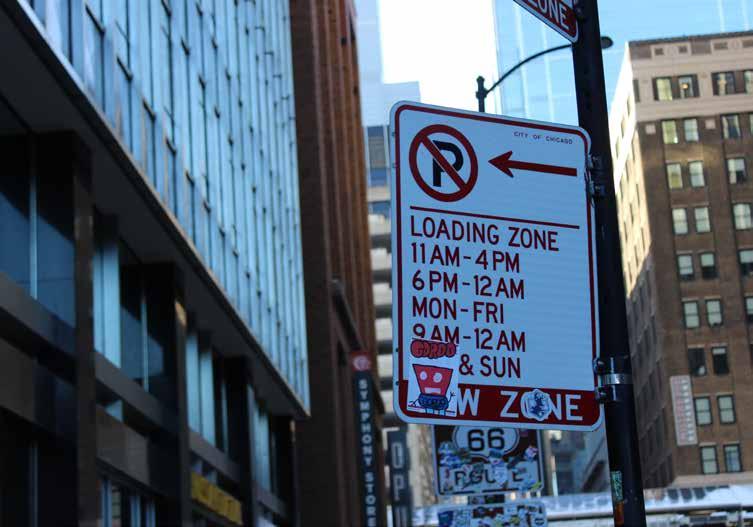
or some exception to the rule is to miss how they’re a common, if not expected, harm that impacts all Chicagoans, generally, but devastates Black and Latinx communities, in particular.
In the research conducted by Tilahun and Sutton, requested by the city of Chicago to inform its ongoing policies around red light and speeding cameras, their work found that Black and Latinx communities had the highest rates of ticketing in the city. Just as with the IRRPP findings, this research also uncovered the additional consequences of late fines and fees on marginalized communities, with lower-income households experiencing fines “46 [percent] of all tickets received compared to just 17 [percent] for upper-income residents.” At the same time, their findings showed that speeding cameras helped reduce the overall percentage of injurious or deadly crashes by 12 percent, revealing the complexities of dealing with these policy issues in a way that saves lives without unduly penalizing already-harmed communities.
“In April, the city rolled out a pilot program that addresses some of the concerns with traffic fines and fees targeting lower income households,” Tilahun said. “I think the city could also experiment with significantly reducing the late fees and that would go some way to address the disparate impact of fees on low income households.”
Updates to the Hardship Index
Another major CUPPA project is one of its most well-known, one that’s been updated recently using newer Census data. The Chicago Hardship Index, first published by the Great Cities Institute (GCI) in 2016, received its first update this year, now using 2016-2020 Census data. With an interactive map that shows numerous communities faring significantly worse than the last iteration, it’s a sobering project that reveals the major work needed to improve economic injustices across racial and geographic divides within Chicago.
While the information presented in the Hardship Index is concerning, its value as a resource for policymakers wanting to produce targeted interventions is also clear. During the early stages of the pandemic, for example, Chicago Public Schools staff contacted GCI about the Hardship Index, eventually using it to determine which communities were most in need of districtprovided digital devices for students to access remote learning. The City of Chicago’s Office of Equity and Racial Justice also contacted GCI about incorporating the Hardship Index into their equity-focused analytic toolkit. That kind of policy impact, according to GCI economic development planner Alex Linares, is precisely why the index was created in the first place.
“I think the Economic Hardship Index that my colleagues initiated is important in having a consistent metric that public officials can
utilize to examine community level changes over time or lack thereof,” Linares said. “What can public officials do in terms of community or economic development practice to shift resources and develop long-term planning in community areas with consistently high levels of economic hardship across time?”
How are nonprofits impacting voting participation?
Recent years have seen frequent conversations on the impact of elections in shaping social change, and the many ways that voting patterns are being shaped by new methods of digital voter contact. Especially as microtargeting can influence specific demographic groups to participate (or not) with increasing levels of sophistication, the need for robust outreach to potential voters, especially those who have historically failed to turn out to vote, is a critical concern for the future of our democracy.
These issues have been central to Public Policy, Management, and Analytics Professor Kelly Leroux for more than a decade. Leroux, who received a fellowship with the National Academy of Public Administration last year for her deep involvement in nonprofit management, first began researching Get Out the Vote (GOTV) methods in the 2010 midterm elections, continuing this critical work in the decade since. Her most recent paper, co-authored with CUPPA alumni Dr. Julie Langer and current CUPPA PhD student Samantha Plotner, focused on how nonprofit messaging and outreach approaches shaped voter participation, recognizing the critical role of trusted community organizations in reaching non-voting populations.
The paper, sponsored by the Department of Public Administration at Northern Illinois University, where Langer now teaches, examined two different types of messages to potential voters –one that focused on voter’s power to impact election outcomes, and one mentioning immigration as a key campaign issue – as well as two methods of contacting voters, via postcards and text messages. While there was no clear evidence that either message or outreach method was more effective than the other, all methods nevertheless had a significant impact on voter participation.
“We have an accumulation of empirical evidence which shows that when nonprofits communicate with their clients and community members about voting, it leads to higher turnout,” Leroux said. “Literally, any effort to engage voters will yield a civic return on investment.”
Their findings have already proved critical in the field, and the research won a best paper award from the upcoming Association for Research on Nonprofit Organizations and Voluntary Action (ARNOVA) Conference. But Leroux and her collaborators aren’t done: while still in its early stages, they’re hoping to form a GOTV lab that can conduct repeated studies on voter outreach and
participation, a need that’s especially critical for smaller, lowerturnout elections where even minor increases in voting could have major outcomes.
“This particular study was carried out in a national election year, but nonprofits stand to play an even more important role in offcycle elections and primaries where turnout is notoriously low, and we hope to expand our research efforts to include experiments in some of these elections that end up being decided by extremely small number of voters.”
Conclusion
While Theodore’s research with Equity and Transformation was primarily carried out before the pandemic, the organization has continued to push forward important policy ideas forward that have since seen wider adoption. Indeed, in late 2021, the organization announced a guaranteed income pilot program for 30 formally incarcerated people living in the West Garfield Park neighborhood, getting much-needed resources to those who needed them most. By placing $500 a month in unconditional income in people’s hands, the program emerged six months before a similar initiative launched by the Cook County government, showing just how critical these ideas are in today’s policy conversations.
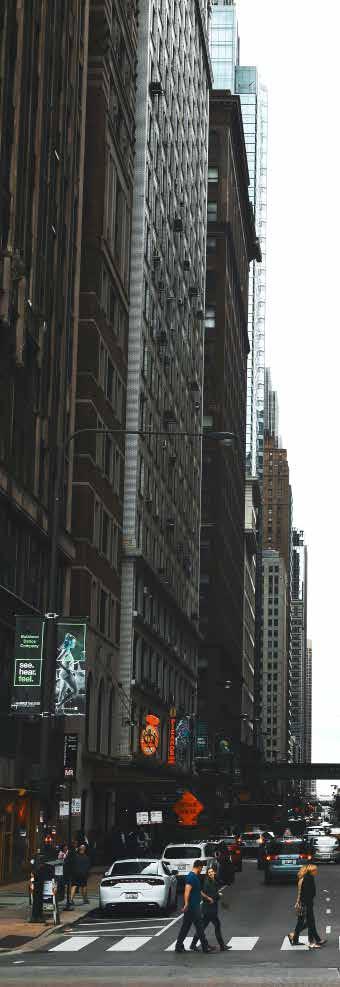
Across these various projects, CUPPA has consistently tackled some of the most pressing issues facing our communities today, recognizing the vital need for effective, people-centered research. While the work being undertaken by the college is simply one small component of larger policy campaigns, public debates, and other activities pushing to make the places we call home more equitable, this work provides critical resources across many different areas, work that will only continue within the college in the years to come.
For Theodore, the work being carried out by EAT is precisely how policymakers can be challenged to adopt more transformative policy agendas. Citing Mayor Lori Lightfoot’s pre-pandemic Poverty Summit as one model for change that could go further
“The mayor and other policy folks in the city laid out a very ambitious agenda for ending poverty in Chicago, but one thing that was noticeably absent was a recognition of the informality we laid out in our study,” Theodore said. “EAT is trying to advance the progressive agenda, and it includes a guaranteed income as a possible strategy to alleviate some of the hardships faced by Chicagoans.”
https://cuppa.uic.edu/our-research

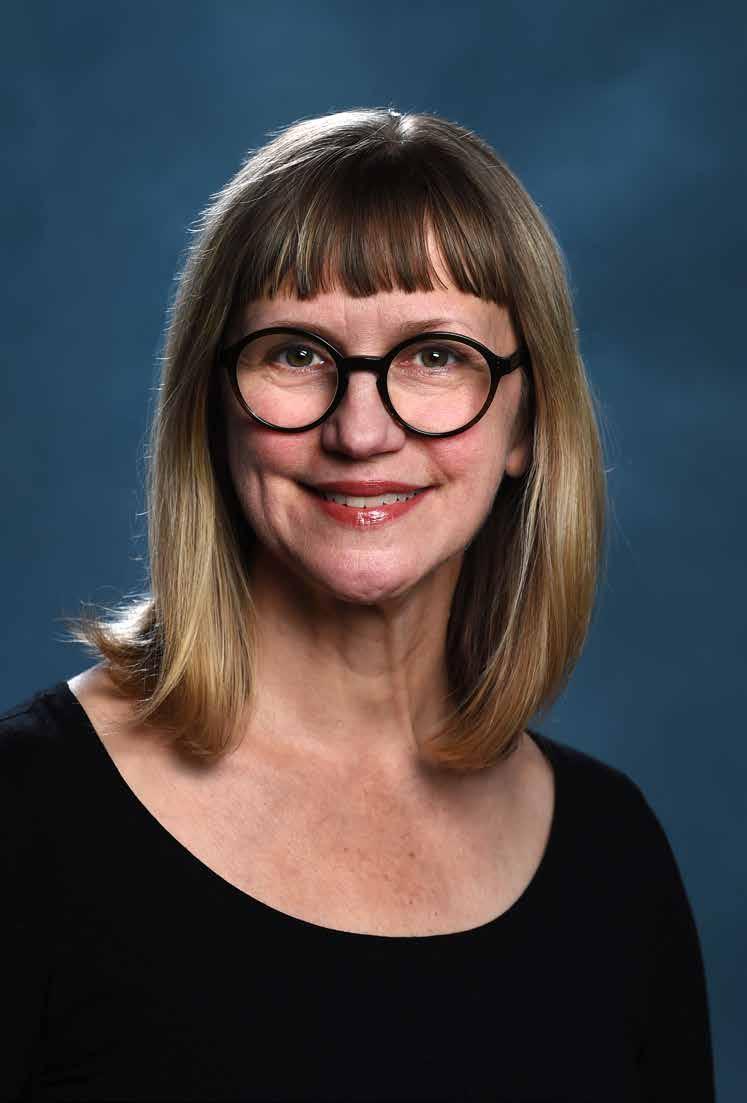
Remembering Janet, The Janet L. Smith Practitioner in Residence program
As Janet Smith began her professorial career at UIC in the late 1990s, the major urban planning issue of the day was the fate of Chicago’s public housing projects. High-rise towers at Cabrini Green, Stateway Gardens, the Robert Taylor Homes, and more were all on the chopping block, and their largely-Black residents feared for the future of their housing. In a climate in which most people in power were turning their back on residents, making vague promises about a ‘right to return’ that were soon broken, Smith recognized the unique importance of lending her voice to these issues, even as it deviated from the typical role of a university professor.
For Urban Planning and Policy professor Rachel Weber, whose career at UIC began at the same time as Smith’s, the courage and conviction that Smith showed in deciding to get involved was an inspiration. Weber remembers many early conversations in their decades of working together, as Smith how she could be most useful to the residents hoping to maintain a sense of place in the city.
“She didn’t know if this was something she should get involved with, and how much she should push,” Weber said. “But we had this emotional heart to heart, and she realized her engagement in the issue was important, even as she had to navigate the politics carefully to retain her academic integrity.”
This kind of engaged scholarship, and a refusal to treat the academy as something separate from its surroundings, guided Smith throughout her career. Now, after her untimely death on January 17, following a lengthy battle with cancer, Smith’s spirit of courageous, engaged research and advocacy is being carried on with the creation of the Janet L. Smith Practitioner in Residence program, to be hosted at the Nathalie P. Voorhees Center for Community and Neighborhood Improvement. The program will create new positions for engaged practitioners to work within the College of Urban Planning and Public Affairs, the kind of bridging work that Smith modeled throughout her career.
Smith’s upbringing was a significant part of what made her so passionate about her work. Born in Chicago, she originally grew up at 85th Street and Stony Island, part of the Marynook community on the city’s Southeast Side. Growing up in an era when the racial composition of cities and individual neighborhoods changed significantly, Smith told UIC Today in a 2012 interview that “We went from a mixed-race neighborhood to me being one of the last white kids on my block.” That kind of experience, witnessing firsthand the ways in which large-scale public policies had an
on-the-ground impact on people’s daily lives, helped form Smith’s passion for urban policy work, with a grounding in the communities most impacted by these larger structural changes.
Yittayih Zelalem, who has served as co-director of the Voorhees Center with Smith since 2004, also had a quarter-century working relationship with Smith. In the nearly two decades of co-leading the Voorhees Center together, Zelalem saw Smith take charge of the center’s outward-facing presence, drawing in outside partners to work with the center in a way that has connected it to communities both across Chicago and around the world.
“She was the face of the center, and we are still feeling the loss,” Zelalem said. “She was such an outgoing person who made friends easily.”
The first practitioner in residence will be Chicago Rehab Network Executive Director Kevin Jackson, a longtime friend of Janet’s. Jackson, whose work at CRN helps to guide the nonprofit housing development sphere in the city of Chicago, will spend a day a week at CUPPA, working with students and faculty in various roles in relation to his decades of experience in affordable housing development, and carrying on the impact she had on his life and work.
“Janet was a kindred spirit to so many of us working for positive social change with a particular emphasis and commitment to neighborhood empowerment and affordable housing,” Jackson said. “Whether in community meetings, at rallies and marches or public forums, Janet excelled at getting the facts right and focusing on the context that matters to improve racial equity and justice.”
Even as the practitioner program is in its infancy, it follows a model that Smith established across her career, bridging academic work with outside practitioners in ways that encourages a different approach to the academy. For those like Weber who worked closely with Smith across her career, it’s an approach that served as a constant source of inspiration, one that will stay with those who continue to carry out her legacy in this form.
“Janet wasn’t a typical academic in some ways, and she had no use for some of the pretension of the ivory tower,” Weber said. “She was always fighting to make the university more accessible and the university more relevant to people outside the university.”
https://voorheescenter.uic.edu

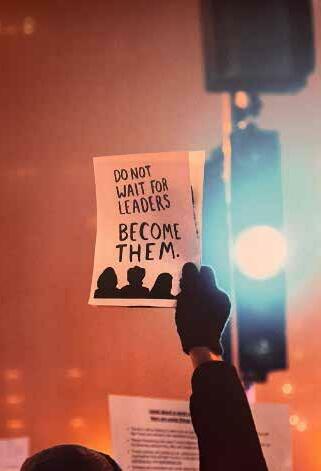
What’s In a Name? Public Administration Becomes Public Policy, Management, and Analytics
When faculty in the Department of Public Administration first began considering changing the name of their department several years ago, it was already experiencing significant changes. Since 2015, the department has added three new degree programs: Master of Science in Civic Analytics (MSCA), Bachelor of Arts in Public Policy (BAPP), and Master of Public Policy (MPP), as well as three minors in Public Policy, Civic Analytics, and Nonprofit Management. These changes, and the added focus areas that they contain, reflect the burgeoning areas of interest for the department’s faculty and students, with a name change catching up to what had already changed.
“We have such a wide range of backgrounds in public policy, and public administration, of course, but also political science, sociology, economics, and more,” department head Jered Carr said. “We’ve always been a broad group, and the name ‘Public Administration’ was too small for us a long time ago, but it became much more pressing in the last few years.”
After a year-long formal search process, members of the faculty unanimously adopted the new name “Department of Public Policy, Management, and Analytics,” effective starting this fall. As the new name suggests, the department’s vision is far more expansive than its old title could indicate, presenting a more wellrounded image of a department whose identity only continues to grow more complex.
For Carr, the new name isn’t even an attempt to look forward. It’s a reflection of the organic change that’s already permeated the entire department, with the three new headers helping the department catch up to the many developments that have reshaped the research focus of the faculty, students, and research centers in recent years.

“When I talk about these changes with my colleagues in Urban Planning, I tell them, ‘This isn’t about who we might be someday,” Carr said. “This is where we are right now.”
Professor Michael Siciliano, who chaired the ad-hoc faculty committee tasked with determining a new name, agrees that the name change shows the ways that the department is better equipped today to address the substantive issues of government
The Department of Public Policy, Management, and Analytics masters degrees’ domain distinctions.
administration and policymaking. Far more than just a name change, it reflects a deeper-rooted transformation of the department, one that continues to place it at the cutting edge of the many disciplines it represents. “Modern effective government requires input from many disciplines, and the teaching and research in our department reflects that,” Siciliano said. “Each of our programs is grounded in public sector ethics but moves beyond that and focuses on topics other than government administration to incorporate data science and analytics into how we understand and improve government.”
To determine a new name for the department, an ad-hoc team of four faculty formed in May 2021 to begin exploring potential changes. The process looked at several different key resources to determine the department’s primary focus areas, including a peer review of 23 similar departments nationwide, a keyword analysis of the syllabi from department courses (turning up “public,” “policy,” “data” and “research” as key phrases), and a similar analysis of the faculty’s five most recent published academic papers (revealing “public,” “data,” “research,” and “governments” as key phrases). The committee also used interviews with numerous students, faculty and staff to best decide the department’s new name, presenting participants with two words at a time to best determine what they felt most effectively represented the department’s focus.
One reason that Carr and his colleagues are excited to change the name is to better define the department’s identity, especially in their interactions with their colleagues in the Department of Urban Planning and Policy. While there’s a strong overlap between the two departments, with each sharing a strong interdisciplinary focus, Carr believes the name change will help foster even greater interconnections between the faculty, opening new possibilities for engagement
“I’ve always thought that our strength is the 40 or 50 faculty across the two departments, not focusing on one or the other group as separate,” Carr says. “This was an important exercise for us to go through, because it allows us to talk more about what we do and how similar we are in a lot of important ways.”
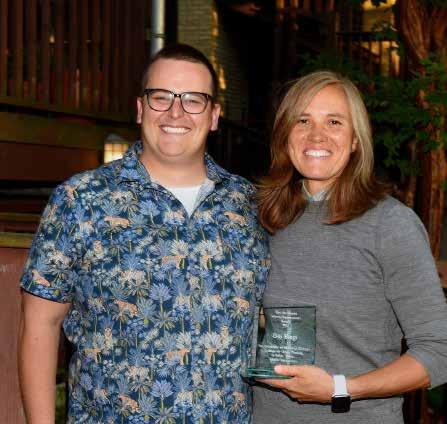
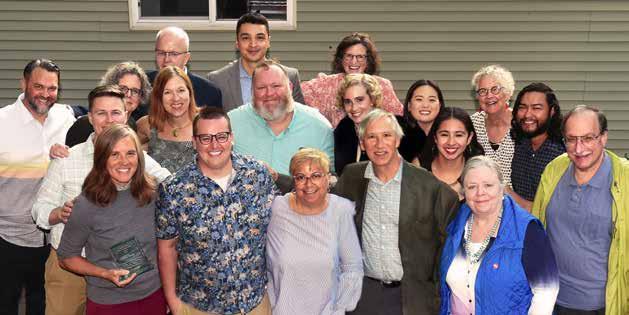
Chicago Transportation Commissioner and CUPPA
Alum Recognized with Marek Award
Gia Biagi, MUPP ’12, who currently serves as the Commissioner for the Chicago Department of Transportationlin, has seen her career take many directions since she finished her Master’s in Urban Planning and Policy at CUPPA. While her time in the MUPP program is only one reason why she’s accomplished as much in her career as she has, her time at UIC has nonetheless had a critical impact on the way her career has unfolded.
“I’ve had an opportunity to work at multiple city agencies in different ways, doing everything from physical planning to economic development planning to community development, really touching all of the pillars of the program,” Biagi said. “I think that’s a testament to how strong the education and practice focus of UIC is, and it’s really enabled me to wear many hats, have a lot of incredible experiences, and try to make my city a better one for everyone who lives here.”
In recognition of the incredible impact that she’s had in the city of Chicago in recent decades, Biagi was just awarded the Jim Marek CUPPA Alumni Association Appreciation Award on August 18. Named in honor of Marek, who served for nearly three decades as the CUPPA assistant dean for student services before unexpectedly passing away in 2010, the prize is awarded annually to an outstanding CUPPA alum whose work has had a significant impact on their field. Biagi said she was grateful to the alumni association for choosing her, noting that she was fortunate to work with Marek during her time in the program.
Mary Lupa, MUPP ‘91, a retired planner who previously worked at WSP USA, nominated Biagi for the award. She said that she’s long admired Biagi’s work in the city of Chicago, and credits her for making the most of the many opportunities she’s gained after graduating from the program.
“Balancing the good things that are possible with the many challenging aspects of executive leadership at the commissioner level is extremely tough,” Mary Lupa, who nominated Biagi for the award, said. “Gia’s flexibility, intelligence and her breadth of capability are what makes her exceptional.”
Biagi’s work at Studio Gang led to an appearance on a panel during the 2017 Urban Forum titled “Building a Just City: Shaping Communities’ Quality of Life.” Former CUPPA Dean Michael A. Pagano chose Biagi to present at that panel, recognizing her tremendous impact.
“When Gia worked at [Studio Gang], she was highly involved in community planning and engagement, and her visibility in Jeanne [Gang’s] firm made her an outstanding choice to be part of the panel about public architecture and art,” Pagano said. “She stood out for her clear sense of values for community engagement.”
Since graduating from UIC with a MUPP, Biagi has had a varied, multifaceted career. Immediately upon graduation, Biagi began working for the Chicago Park District, where she stayed for the next 15 years. Her time at the Park District was varied, as she moved from a role as a project manager to serving as the District’s Chief of Staff for the last two years of her time in the agency. Biagi then spent the next five years working at Studio Gang Architects, one of the nation’s leading architectural firms, leading the company’s Urbanism + Civic Impact practice, which seeks to encourage greater equity within cities through strategic urban design practices. Then, at the start of 2020, Biagi was named the Commissioner of the Chicago Department of Transportation, a critical role overseeing countless aspects of the city’s transportation infrastructure, from public transit and the Divvy bike share system to right-of-way systems on roads.
In these many roles across the city of Chicago, Biagi has inevitably encountered countless CUPPA graduates, all making their own impact on the city. While the program has given her unique opportunities to work across many fields, she said she’s always excited to see where CUPPA graduates take their skills, all invested in making the places they call home better than before.
“It’s powerful that there’s a community of people who were trained similarly, with threads running through similar values and curriculum, and that we’re sort of everywhere with our fingerprints all over Chicago,” Biagi said. “[CUPPA’s] orientation toward making sure that students are active in the real world while they’re there leads to longer-term careers and opportunities in doing all kinds of varieties of planning and public policy.”
https://cuppa.uic.edu/careers/cuppa-alumni-association/jim-marek-alumniappreciation-award

Staying In Touch Is Easier Than Ever
Join the Listserve



The CUPPA alumni listserve is an e-mail list allowing for widespread distribution of information pertinent to UIC CUPPA grads of public administration and urban planning and policy. List posts include events, college announcements, awards, and news and information you can use.
Connect on LinkedIn
CUPPA alumni have their own group on LinkedIn – UIC College of Urban Planning and Public Affairs Alumni. Request to join today. Find CUPPA on Social Media


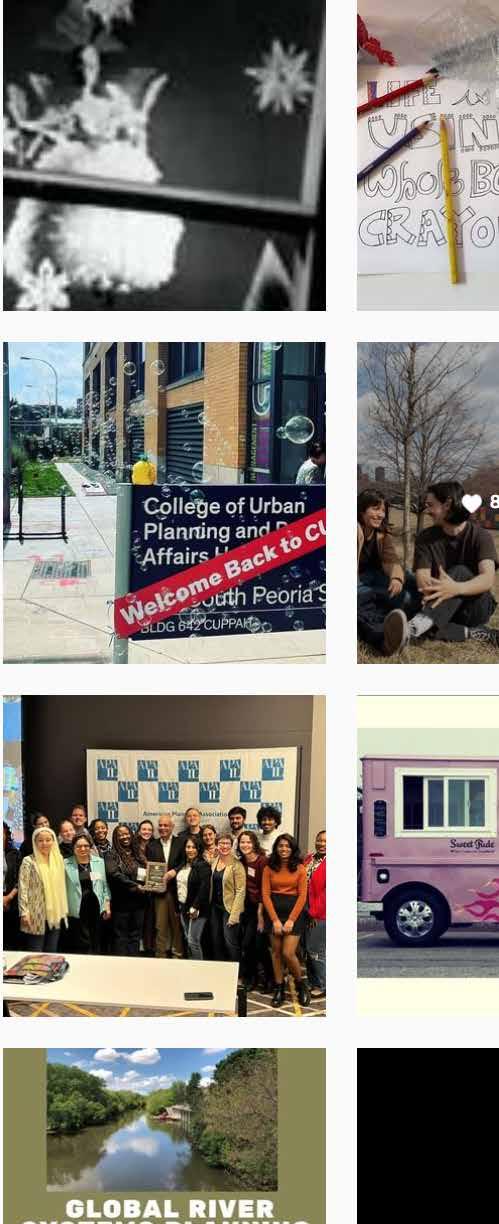
We host robust and varied social media programming across the spectrum @ uiccuppa Twitter, @CUPPAatUIC Facebook, uiccuppa Instagram, and UIC CUPPA YouTube.
Visit our Live Cams
View CUPPA Hall Plaza, the gateway to CUPPA Hall and the northern boundary of the UIC campus on the UIC CUPPA Cam and our City View Livestream Our City View Livestream giving you the view to the east from the Sixth Floor of CUPPA Hall; the Great City of Chicago at our door.
Hire CUPPA Students
Post your internship on our Student Opportunities Blog. Send details to CUPPA@UIC.edu.
Participate in our departmental job/ internship fairs or present a project for Capstone classes. Send inquiries to CUPPA@uic.edu. Note capstone projects commence at the beginning of each semester.
